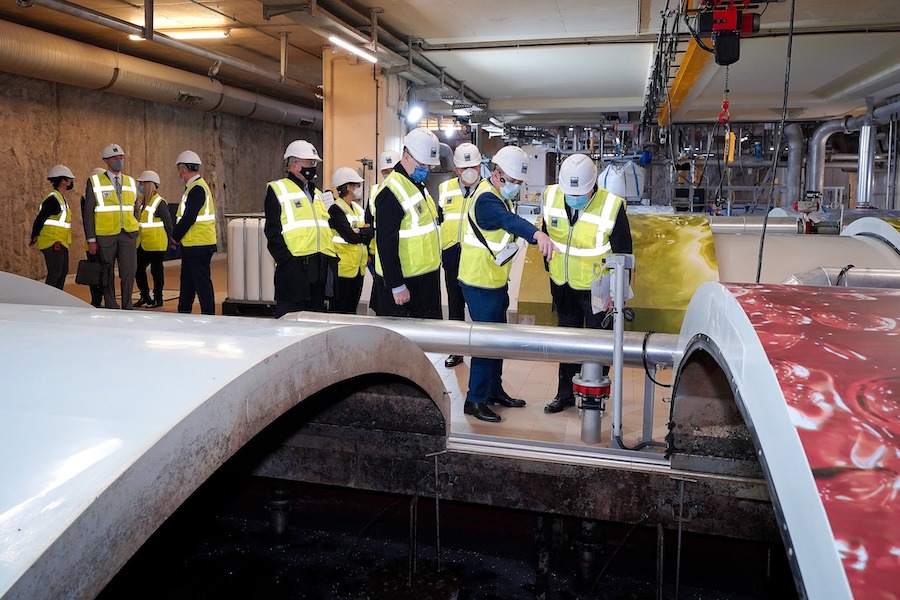After four years of work, the extension built to augment Monaco’s water treatment capabilities has been completed, increasing purification abilities by over 30% and making run-off cleaner than ever, thus protecting the Med.
State-of-the-art technologies were used when building the extension of Monaco’s wastewater treatment plant, called UTER, located under the Triton building in a 10-story development in the heart of Fontvieille. It is part of the Principality’s commitment to the creation of a sustainable city and the goal to protect both the land and sea from unnecessary pollutants.
The project was initiated in 2108 by the government with the help of Smeaux, the country’s drinking water and water treatment plant concessionaire, and has proved to be a major modernisation project worth the investment.
The plant took four years of work and was undertaken to allow the current plant to continue normal operations. It has increased the purification capacities by over 30% while improving the rejection quality to a level 40% higher than the requirements of the European standard. This puts Monaco near the top of the list amongst countries in terms of protection of the Mediterranean.
Prince Albert II visited the site alongside Antoine Frérot, Chairman and CEO of the Veolia group, Minister of State Pierre Dartout, Bernard Fautrier, Minister Plenipotentiary, and Céline Caron-Dagioni, Minister of Equipment, Environment and Urbanism. The Prince expressed his pride in the nation’s biodiversity and resource protection standards.
The new extension facility is the first to be built entirely underground, thus eliminating noise and odour-related issues for the neighbourhood. It treats water not only from the Principality but also from Beausoleil, part of Cap d’Ail and La Turbie, before depositing the run-off 800m off the coast at a depth of 100m.
The extension has been designed to raise treatment capacity from a population of 100 to 130,000, meeting Monaco’s sanitation needs today and well in to the future.
Photo by Michael Alesi, Government Communication Department
